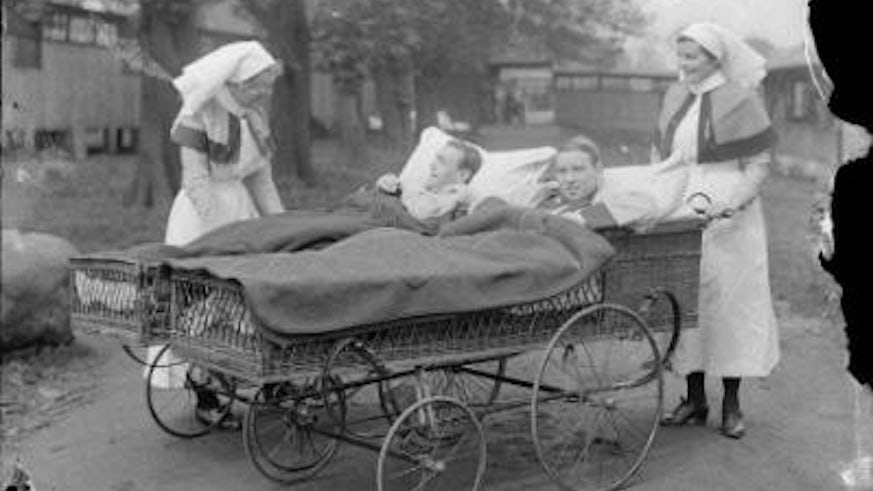Shell shock and the First World War
29 September 2014

A Cardiff researcher has revisited case records from the First World War, revealing the prevalence and devastating impact of shell shock on frontline soldiers.
Dr Stefanie Linden, a psychiatrist and clinical research fellow at Cardiff University's Neuroscience and Mental Health Research Institute, has for the first time analysed the full set of military case records from the National Hospital for the Paralysed and Epileptic at Queen Square, London (today's National Hospital for Neurology and Neurosurgery), the leading neurological hospital of the time.
This analysis has been published in the journal Medical History and describes how this neurological hospital in the heart of London adjusted to the increasing numbers of soldiers with shell shock.
Dr Linden said: "The World War One centenary has reminded us of the immense suffering in the trenches, but also of the enduring impact of the war experience on the entire lives of servicemen. The psychological reactions to the traumatic experiences of combat reached an epidemic scale that surpassed anything known from previous armed conflicts.
"This 'shell shock' epidemic deeply affected soldiers' lives in and behind the trenches and had major effects on morale on both sides of the frontline. Beyond its historical interest, the experience of shell shock has shaped all subsequent models of traumatic disorders, including the current debate on the status of Post-traumatic stress disorder (PTSD)".
The National Hospital received casualties from all over the world, including servicemen from Australia, Canada, South Africa, the USA, Belgium, England, Ireland, Scotland, and Wales. During the war years, fourteen Welsh soldiers with shell shock were treated at the National Hospital. Among them, 29-year old Corporal Llewellyn S from Cardiff who served with the 1stWelsh Regiment. He had reached France in the middle of November and at once went into action near Ypres. According to his medical notes he collapsed in early March 1915.
The notes said:
"While in a barn, a shell struck the roof, blew it off and set fire to the barn. His two companions in the barn were killed and the large quantity it contained of ammunition began to pop off. He rushed out in a dazed condition, but was able to carry his killed companions in a stretcher for three miles to a hospital, where he went sick himself, complaining of pain all up the spine. That night in hospital he ran amok with a rifle (unloaded) and then had a fit."
From then on he was deeply depressed, suffered nightmares and memory problems.
Another Welshman, 27-year old Frank D from Newport, a Rifleman in the 1stMonmouthshire Rifle Brigade, was buried under a bomb explosion in the trench on April 26th 1915. He was rescued but kept crying for two days. At the same time his arms began to twitch. He was transferred to London where he still showed 'lightening-like synchronous twitching of both arms'.
Soldiers with 'shell shock' showed a wide variety of symptoms, ranging from bizarre gaits, shaking and paralyses, anxiety, depression, transient psychoses and PTSD-like symptoms with flashbacks and nightmares. British doctors eventually concluded that such cases would not be able to stand the strain of active service without relapsing and should therefore be discharged from their military duties and returned to civilian life.
"The history of shell shock shows how cultural factors can shape the psychological expression of trauma and is still relevant for the approach to traumatic and war-related disorders today" Dr Linden added.
The full research paper, which was part of a PhD at the Wellcome Trust-funded Centre for Humanities and Health at King's College London, can be viewed on the Medical History website: 'Shell shock' Revisited: An Examination of the Case Records of the National Hospital in London.
Image caption:© Imperial War Museum (Q 27814): Wounded soldiers in invalid chairs being taken round the grounds of the 4th London General Hospital